How a “brand-free” startup got $ 240 million to beat Amazon
Masayoshi Son is known for its profitable investment. In 1996, his SoftBank fund invested $ 1 million in Yahoo, which in three years brought $ 3 billion. In 2000, the company gave $ 20 million to Chinese Alibaba - and by September 2014, when it entered the IPO, they would turn into $ 60 billion. the next brand to blow up the market? Masayoshi Son believes that this will not be a brand at all.
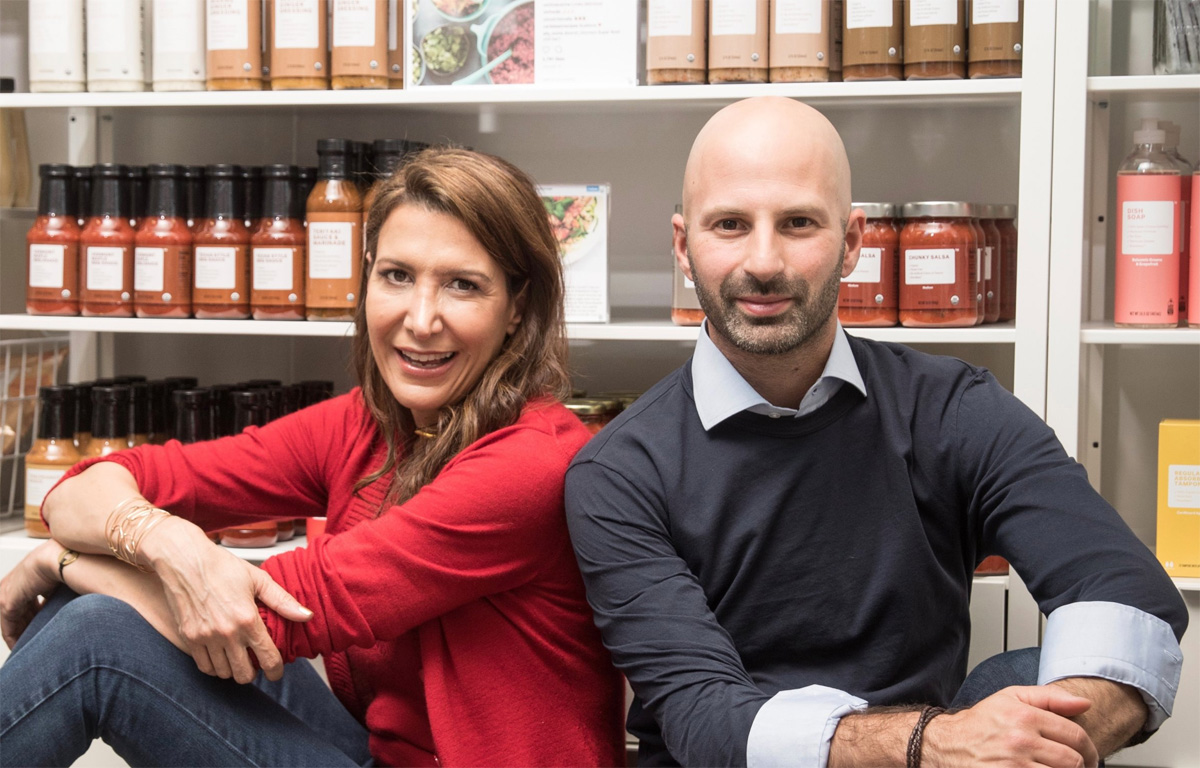
Now his SoftBank with assets of $ 220 billion has a new pet - Brandless, a store without brands. At a meeting with Masayoshi Son in March, the founders of this startup from San Francisco left an experienced investor without words. It turned out that every product he raised from the table, from knives and clips for curling eyelashes to extra virgin olive oil and toilet paper, cost $ 3. And it was the only price, which in principle was present at the store. But unlike “all for 30 rubles”, where the customer is a little ashamed of what he buys, from Brandless every product is of the highest quality, and its main customers are geeks from Silicon Valley.

Masayoshi Son
The secret is that all this is done by Brandless or their partners, and there is no alternative for these products. Want to buy a toothpaste, or stand, or a wooden spoon? Please have exactly one view. The site is proud to exclude any competition between brands and at the same time removes all the flour of choice from the buyer.
The other day, July 31, the company announced that it received investments from SoftBank, $ 240 million! What did Masayoshi Dream see in this “brand-free” store?
Where the legs grow
Tina Sharkey founded Brandless in 2014 with the help of Australian retail veteran Ido Leffler. In 2016, with his help, it was possible to “raise” start-up capital - $ 3.2 million from private investors from San Francisco. In 2017, with this money the company managed to launch its online store . Then there were only 115 products in it, mainly cosmetics and some things for the house (spoons, knives, towels ...).
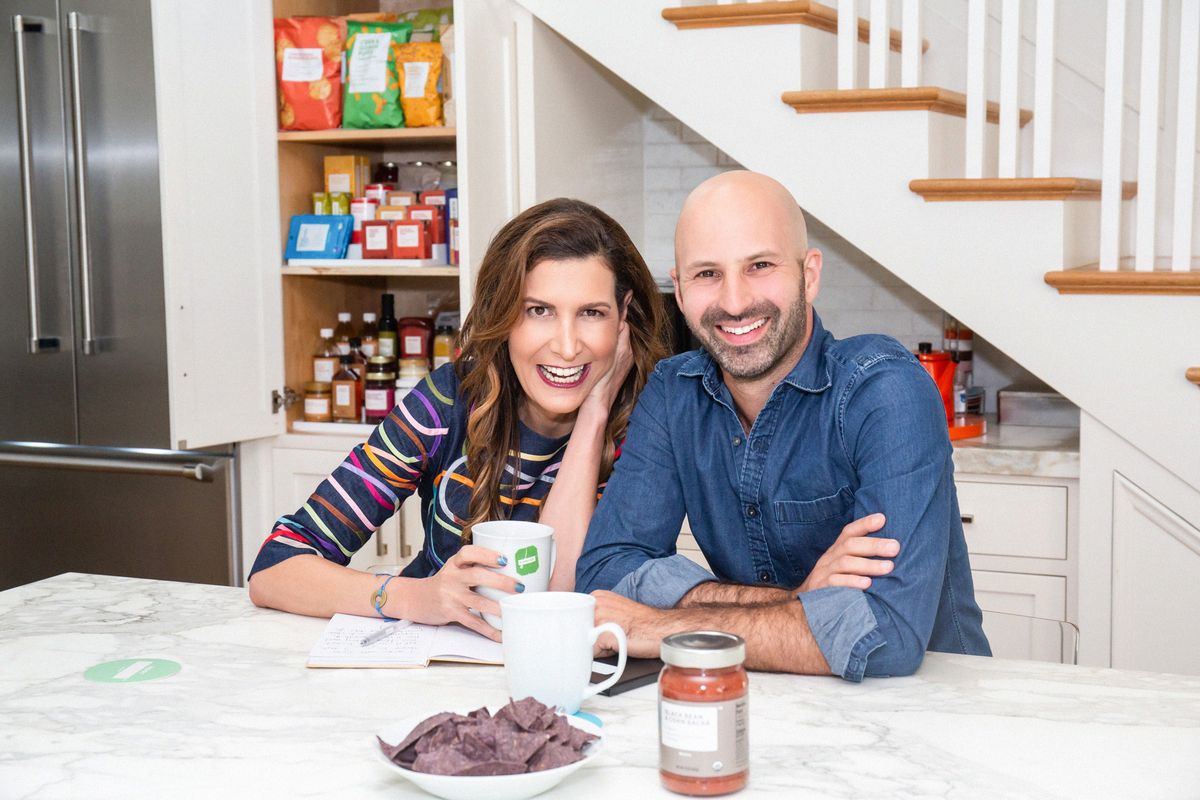
The founders of the company, Tina Sharkey and Ido Leffler
All products were made by partners of the company - small factories from the States who did not have the money to promote their own brand. As a result, Brandless bought their enterprises, and now fully controls the process from the production of goods to their sale directly to the consumer, in contrast to the same Amazon and AliExpress.
The company says that this strategy allows you to remove the "brand tax", designed to recoup the cost of large-scale marketing. For popular items, this markup can range from 40% to 370%. And this is not only Gucci T-shirts or Prada handbags, this also applies to cosmetics (“more expensive means better!”), And food, and various household items.
Removing markups for branding, marketing and distribution allowed Brandless to offer unique prices. All products in the store are sold for $ 3 (or $ 3 for two, or $ 3 for three). With some, the firm earns a dollar, others (the company does not disclose which) are sold at a loss. But according to Tina, it's worth it. The store is not wasted on its advertising, but due to such a unique pricing policy, dozens of major international magazines have already written about it, including Bloomberg and Forbes, and this is much more valuable than losing a couple hundred thousand dollars on corkscrews and knives.
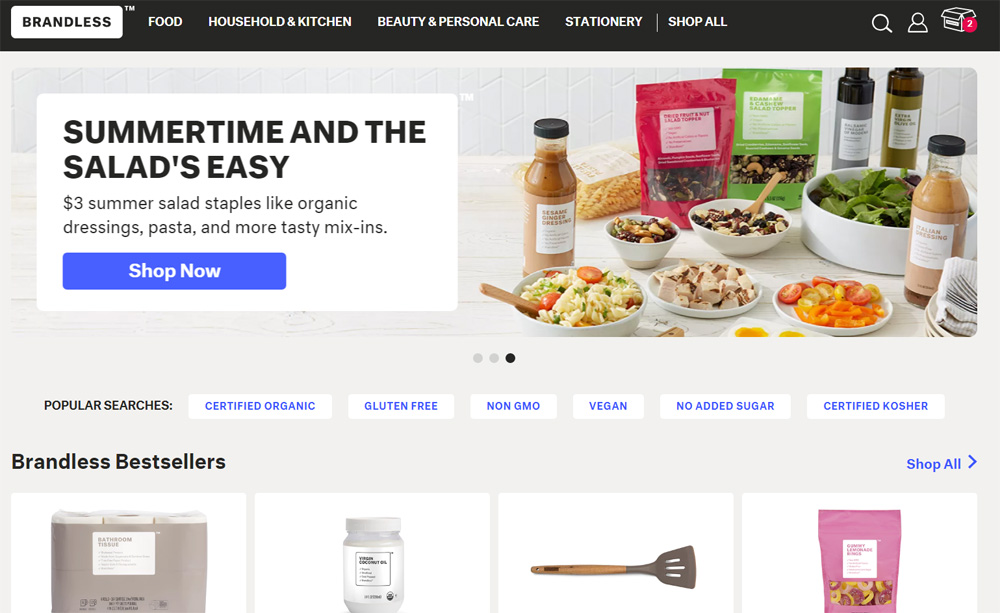
Bezbrendovogo site
An interesting pricing model also allows the store to stand out in the US market among e-commerce giants like Amazon and Jet.com. There, sellers are forced to fight for the buyer with their own prices, and all sites are full of marketing "$ 19.97" and "$ 189.98", which, according to Tina and Ido, only confuse buyers. Plus - constant promotions and discounts, and the price is constantly changing depending on the season or even the day of the week. If you bought something cheap, you still get the feeling that you have been cheated somewhere. But with Brandless, the customer knows exactly at what price he will buy his product, and that he will definitely not sell for less. And sellers (in theory) can compete for a client only on the basis of the quality of their products.
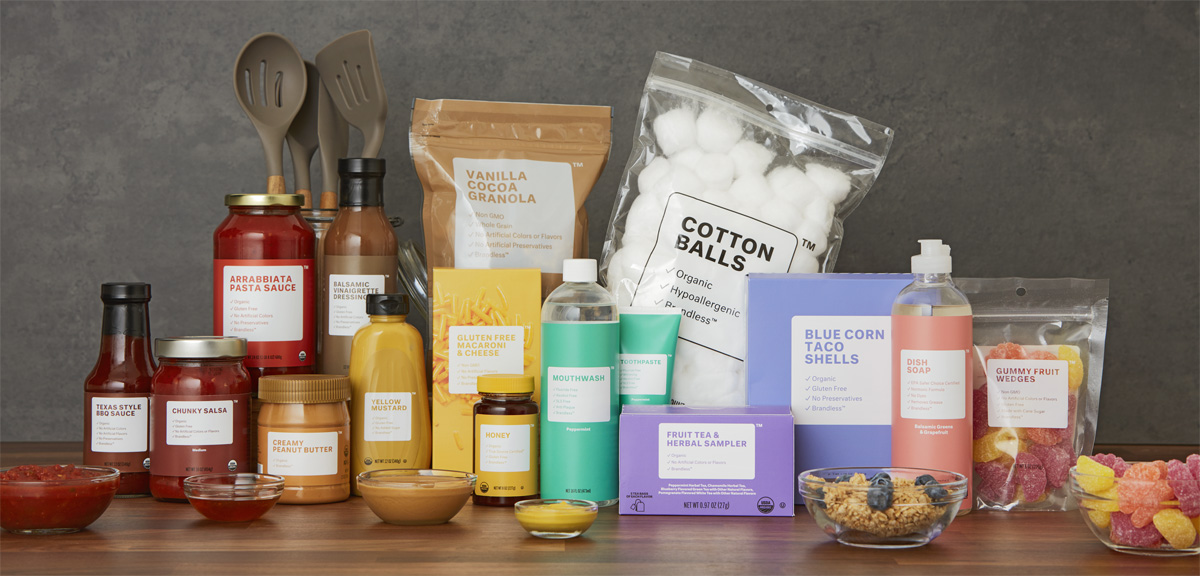
As a result of the purchase, users receive on the screen the amount that “approximately” they saved on “brand tax”. Plus, a certain part of the company's profit goes to donations to charitable organizations. And also - with the purchase it is shown how much food the homeless can get at the expense of your activity (for example, one dish at a cost of $ 6). Brandless says it also helps customers feel better, even for half a second. And if so, then it is worth it.
Shortly after the launch of the site, the company received another $ 48 million in two rounds - from venture capitalists Redpoint, GV, NEA and champions basketball players Stephen Curry and Nick Young. But the current $ 240 million received from SoftBank, of course, overshadows all previous investments. For the money, even if the store will lose on each of its sales, he will be able to live a few more years.
What now
Brandless is still based in San Francisco, where the firm has its own small shop where it tests concepts. Plus - the company owns an additional factory in Minneapolis. In a “brandless” startup, everything works the way the advanced people of Silicon Valley like it. All food - without GMOs, all products for health and beauty - are made without violence against animals. All paper products are only from those forests in which trees are correctly restored, and where felling does not disturb the ecosystem. No artificial toxins, dyes, flavor modifiers or flavors are used in food, cosmetics or detergents.
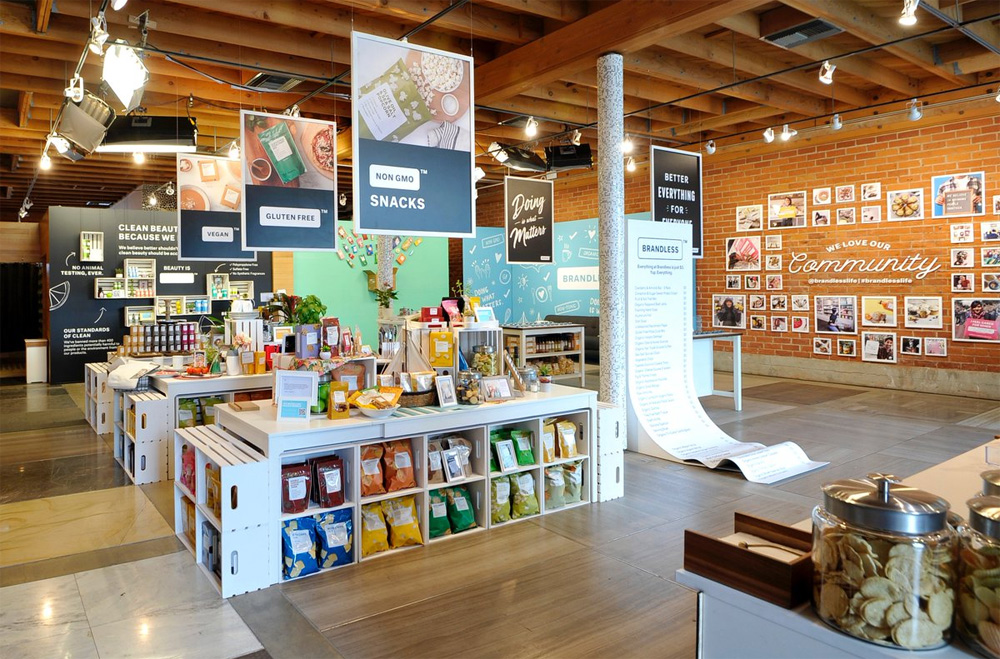
Brandless offline store in San Francisco
Packaging of goods is made only in one color, and, besides a small picture with what is inside, they can contain only a simple white label. It says the name of the product and a maximum of two or three auxiliary words that say something that it is important for the customer to know (organic, kosher, vegan, gluten-free, etc.). No marketing husk, no overpayment to advertising agencies that develop packaging and tell how it will lure the buyer.
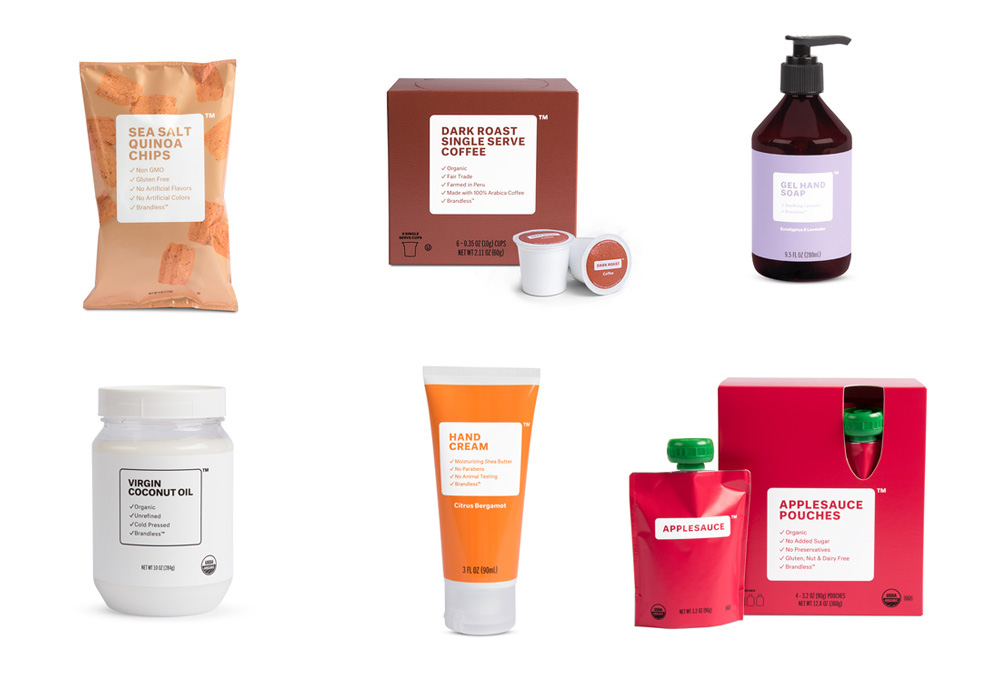
"Brandless" products
The store now sells about 350 products on its website . Most of them are really cheaper than their counterparts on Amazon. But there are exceptions - for example, Jeff Bezos’s soap can be found one and a half times cheaper. But Brandless, of course, says that it’s about the quality of the product, and their goods will be safer, eco-friendly, and so on. The company's global goal is to win a place under the Sun from Amazon, and to make sure that people turn to it for such small household products. And let Bezos have big gadgets, clothes and accessories.
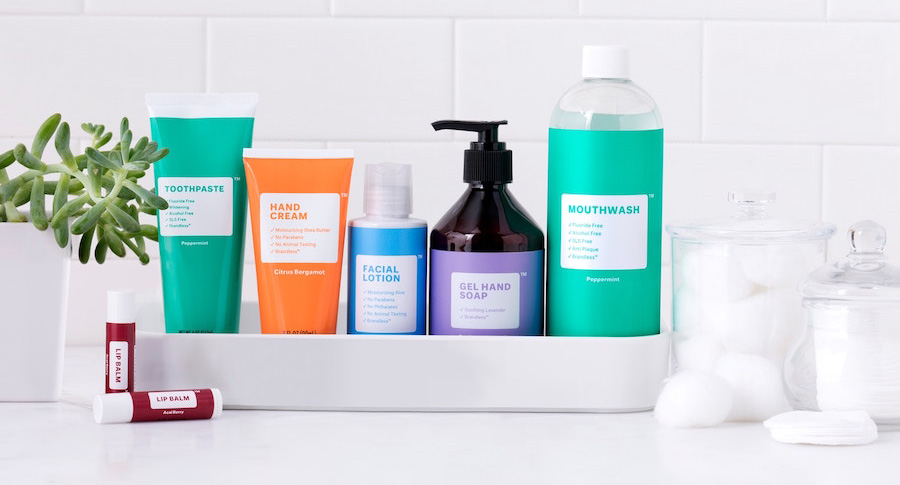
Previously, with this approach Brandless could be considered a kamikaze. But with the new money from SoftBank, the company has a chance. The fund invested $ 240 million, valuing the store at more than $ 500 million - just a year after the start of full-scale operation of the company. Tina Sharkey says that in their field they will be able to defeat Amazon, because the Internet giant by nature will not be able to offer the same thing as Brandless.
Amazon is a store that sells everything. And we have a strictly curated collection. What is better - when the eyes run up, or when there is only one product in front of you, but are you 100% sure about it?
SoftBank has a large portfolio of e-commerce companies outside the US, including a stake in Indian Flipkart.com and a third of Chinese Alibaba.com. But in the States, Brandless.com will be just the fund's second investment. The first was Fanatics.com , selling equipment for hockey, basketball, football and other sports. SoftBank has invested $ 1 billion in it. Brandless hasn't needed that much for now, but the head of the foundation, Son Masayoshi, has already said that in the future they may increase their investment. To such an extent, their organization believes in the future of this “brand-free” store.
What are the dangers
The minimum profit from Brandless’s products scares some experts and makes them doubt the future of the company. Sacharita Kodali, an analyst at Forrester Research, says that in the segment of products for everyday use, where Brandless works, this is a particular problem. Such things have to be regularly delivered to customers, and then either you lose on each delivery, or you take more for it than for the product itself. Both situations are unprofitable for the company (for the time being, it asks for $ 5 for the delivery of orders for less than $ 39, and everything above is paid by itself).
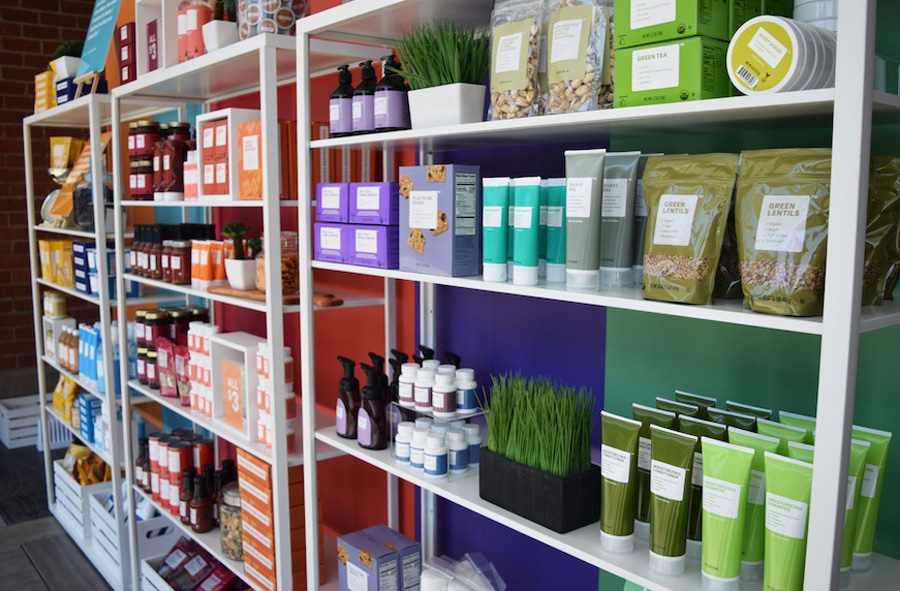
The strict price of all products on the site is also a big problem. The dollar depreciates by 2.2% for the year, and the cost of goods for buyers will inevitably have to be raised. Because of the model of the work Brandless do, apparently, you will have to immediately on the entire site, which may alienate users. Someday, when they wake up, they will see that all products suddenly began to cost $ 4. A few years later - $ 5. Each such revaluation will be a great stress for buyers and for the store. But so far, thanks to millions of investments, Brandless doesn’t have to worry about it, and she is simply gaining customers.

Finally, if Amazon feels that at least some kind of threat emanates from the “brand-free” store, if desired, the corporation can, according to Sacharita, “crush Brandless like a cockroach,” offering absolutely any price for the same things that he wants, up to $ 0.01. With a cost of $ 900 billion, he is not afraid of either SoftBank or a small startup from San Francisco with 90 employees.
In the meantime, resellers remove the main cream from the situation. On Amazon, you can find hundreds of offerings of Brandless products at prices ranging from $ 9 to $ 37.99 - that is, with a premium of up to 1200%. Apparently, it is designed for those who are not used to buying anything outside the main American online store.
Tina Sharkey hopes to cooperate with other firms from the SoftBank portfolio, including delivery services and vertical farms. In Asia, according to plans, Brandless with SoftBank will form a joint venture in the next few years. In the meantime, fund money will be spent on improving logistics and speeding up the delivery process within the United States. By the end of the year, the store plans to expand, increasing the number of products to 400. Plans for the fall include lentil chips, oatmeal cookies with cranberries and lip balm.
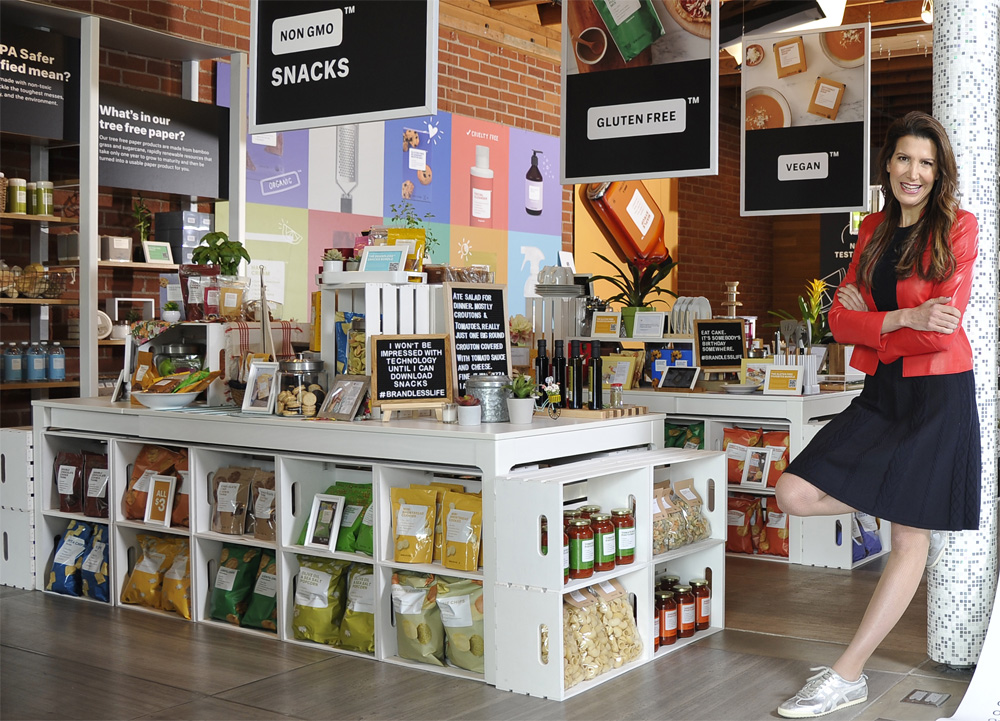
So far, we can say for sure, the new $ 240 million will cover a lot of packages with cookies. But Brandless will need a lot more if you ever have to go into a protracted price war with Amazon sometime in the future.
PS You can deliver products from American online stores with Pochtoy.com. From $ 8.99 per pound. When you register with the HABR code, you will be credited $ 7. And now we have a Telegram channel with the latest news about discounts and sales in US stores.
